 |
| An artist's impression of Oviraptor, an egg thieving dinosaur |
The oviraptorids were one of the later groups, with a temporal range of 110 to 65 million years, and while not a very diverse dinosaur family, they were one of the strangest. They were all small but many were covered in feathers, crests and were possibly brightly coloured. Like all dinosaurs, they had tails. What was special about them was that they were covered in a series of long, blade-like feathers, in a similar arrangement to the tail feathers in most bird species.
It is thought that these were for some kind of display purpose, such as in mating rights. The oviraptorids had unusually compact and flexible tails. Scott Persons, a doctoral student at the University of Alberta, looked at fossils and models of musculo-skeletal system of oviraptorids, and found evidence to suggest that it might be similar to a peacock's tail.
His research was originally into the comparison between the tails of various theropod dinosaurs. When he came to the oviraptorids, he noticed some rather interesting features. He saw that they were far shorter than in most other dinosaurs. However instead of lacking vertebrae, the bones were simply compressed. A spine, with its many parts, can move far more sinuously than an arm with just two joints. Markings on the bones and traces of fossil slabs show that the tail was also very muscular.
Finally, the fossils showed that the feathers were connected to a series of fused vertebrae at the end of the tail, giving the structure weight and poise. This feature is only known in oviraptorids. When Persons put all these pieces of evidence together, he came to the conclusion that 'the egg thieves' were adapted to move the tail dexterously for display purposes in daily life. It is likely that we will never know for sure. Yet the theory is plausible due to the close relationship between birds and dinosaurs.